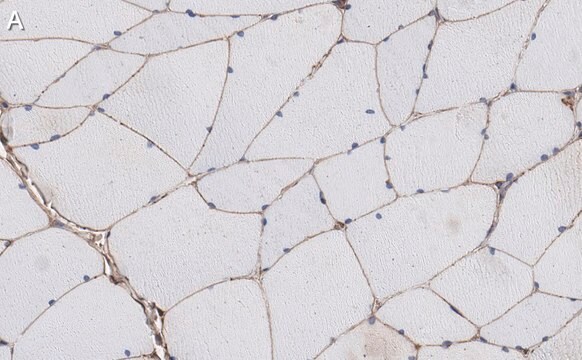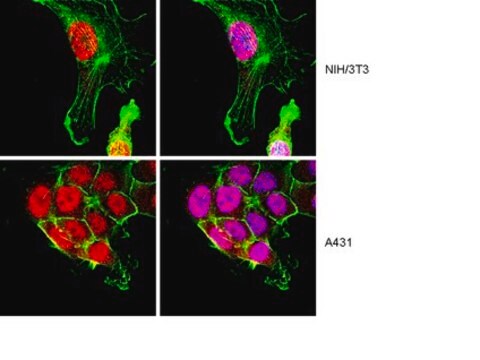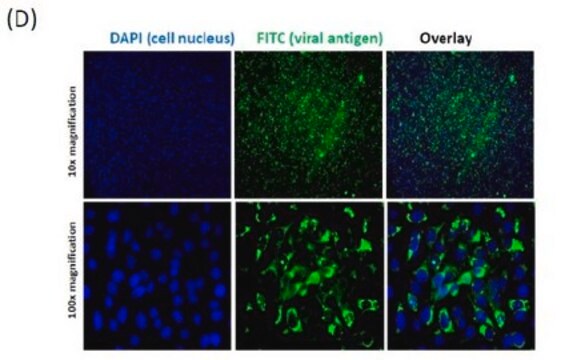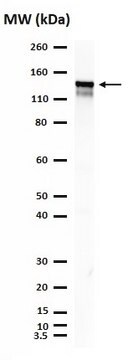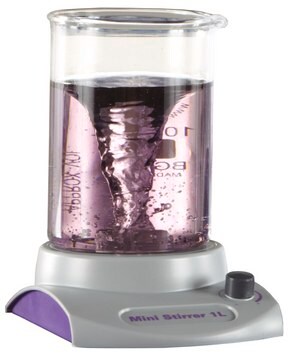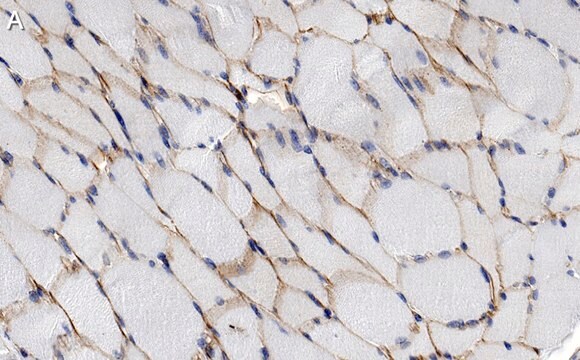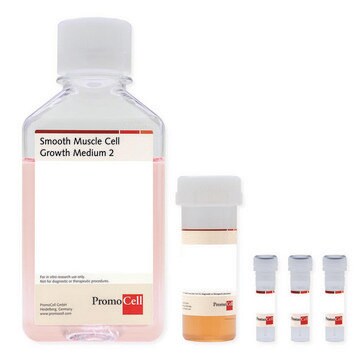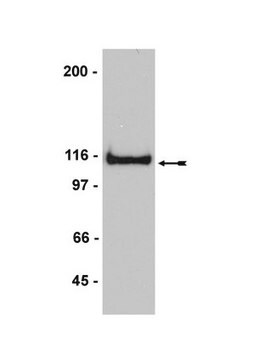05-593
Anti-α-Dystroglycan Antibody, clone IIH6C4
ascites fluid, clone IIH6C4, Upstate®
Sinonimo/i:
Dystrophin-associated glycoprotein 1, dystroglycan 1, dystroglycan 1 (dystrophin-associated glycoprotein 1), dystrophin-associated glycoprotein-1, LARGE-glycan, Large glycan
About This Item
Prodotti consigliati
Origine biologica
mouse
Forma dell’anticorpo
ascites fluid
Clone
IIH6C4, monoclonal
Reattività contro le specie
human, mouse, canine, rat, guinea pig, rabbit
Produttore/marchio commerciale
Upstate®
tecniche
immunofluorescence: suitable
immunohistochemistry: suitable
inhibition assay: suitable
western blot: suitable
Isotipo
IgM
N° accesso NCBI
N° accesso UniProt
Condizioni di spedizione
dry ice
modifica post-traduzionali bersaglio
unmodified
Informazioni sul gene
human ... DAG1(1605)
Descrizione generale
Specificità
Immunogeno
Applicazioni
Western Blot Analysis: A previous lot of this antibody was used on mouse muscle tissue lysate 3 months after shRNA induction, and in littermate controls (ctrl) and LARGE-null negative control (myd) (Goddeeris, M., et al. 2013, Nature).
Immunofluorescence: A previous lot of this antibody was used to detect α-Dystroglycan /LARGE-glycan in mouse muscle tissue (Goddeeris, M., et al. 2013, Nature).
Metabolism
Muscle Physiology
Qualità
Western Blot Analysis:
A 1:1000-1:2000 dilution of this lot detected α-Dystroglycan/LARGE-glycan in rabbit skeletal muscle.
Note: The use of WGA purified protein results in significantly cleaner blots and immunoprecipitates.
Post-translational modification of dystroglycan causes band broadening.
Descrizione del bersaglio
Stato fisico
Liquid at -20ºC.
Stoccaggio e stabilità
Risultati analitici
Rabbit skeletal muscle lysate.
Altre note
Note legali
Esclusione di responsabilità
Raccomandato
Codice della classe di stoccaggio
12 - Non Combustible Liquids
Classe di pericolosità dell'acqua (WGK)
WGK 2
Punto d’infiammabilità (°F)
Not applicable
Punto d’infiammabilità (°C)
Not applicable
Certificati d'analisi (COA)
Cerca il Certificati d'analisi (COA) digitando il numero di lotto/batch corrispondente. I numeri di lotto o di batch sono stampati sull'etichetta dei prodotti dopo la parola ‘Lotto’ o ‘Batch’.
Possiedi già questo prodotto?
I documenti relativi ai prodotti acquistati recentemente sono disponibili nell’Archivio dei documenti.
Il team dei nostri ricercatori vanta grande esperienza in tutte le aree della ricerca quali Life Science, scienza dei materiali, sintesi chimica, cromatografia, discipline analitiche, ecc..
Contatta l'Assistenza Tecnica.